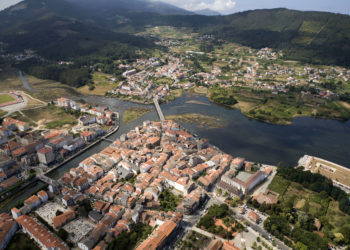MUROS AND NOIA ESTUARY
The rugged mouth of the Tambre holds some of the most beautiful beaches in Galicia. A natural outlet to the Compostela Sea, this estuary also has towns such as Muros and Noia, which maintain well-preserved historic centers, and various natural and gastronomic treasures that make a visit from Santiago highly recommended.
Muros stands out for its beautiful historic center full of ported houses with a traditional structure, declared a Historic Artistic Site. The town continues to be an important fishing center and, in addition, has famous beaches such as those of Esteiro, San Francisco or Louro, at the foot of the mountain of the same name, rich in legends, such as the one that tells that in the lagoon behind the On the sandy shore there are still the remains of a city swallowed by the sea hundreds of years ago.
The mouth of the Tambre has spectacular beaches and towns full of history
At the mouth of the Tambre River, one of the largest in Galicia, is the town of Noia, with a beautiful historic center. The arcades and old shops attest to the commercial tradition of the town, which was once considered the authentic ‘port of Compostela’, through which the archiepiscopal city communicated by sea with the rest of the world. The importance of navigation for the town is testified by the fact that several Noieses stood out in the Spanish conquest of America, such as Antón de Noia, cabin boy on Magellan’s voyage around the world. The churches of Santa María a Nova (14th century) and San Martiño (16th century) are two of its most representative monuments.
Following the estuary on its southern side is the municipality of Porto do Son, famous for its beaches. One of them, Baroña’s, is warm by an important Castro, inhabited among the 1st B.C. and I A.C.; Another, that of As Furnas, is linked to the figure of Ramón Sampedro, Tetrapléjico for an accident happened in this sand, which was immortalized by Javier Bardem in the movie The Sea Inside.
Other spectacular sandy beaches are those of Aguieira or Gaivotas.



